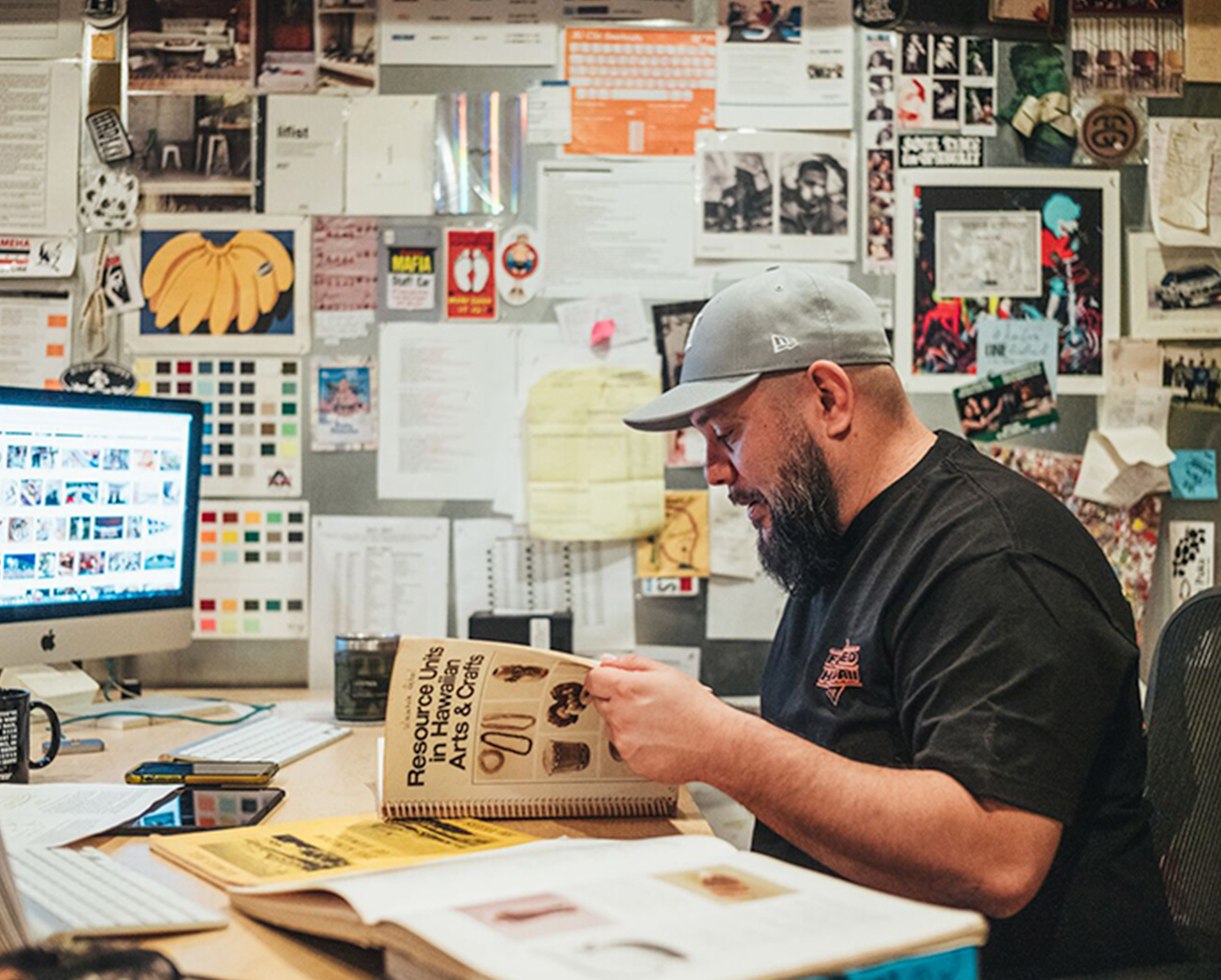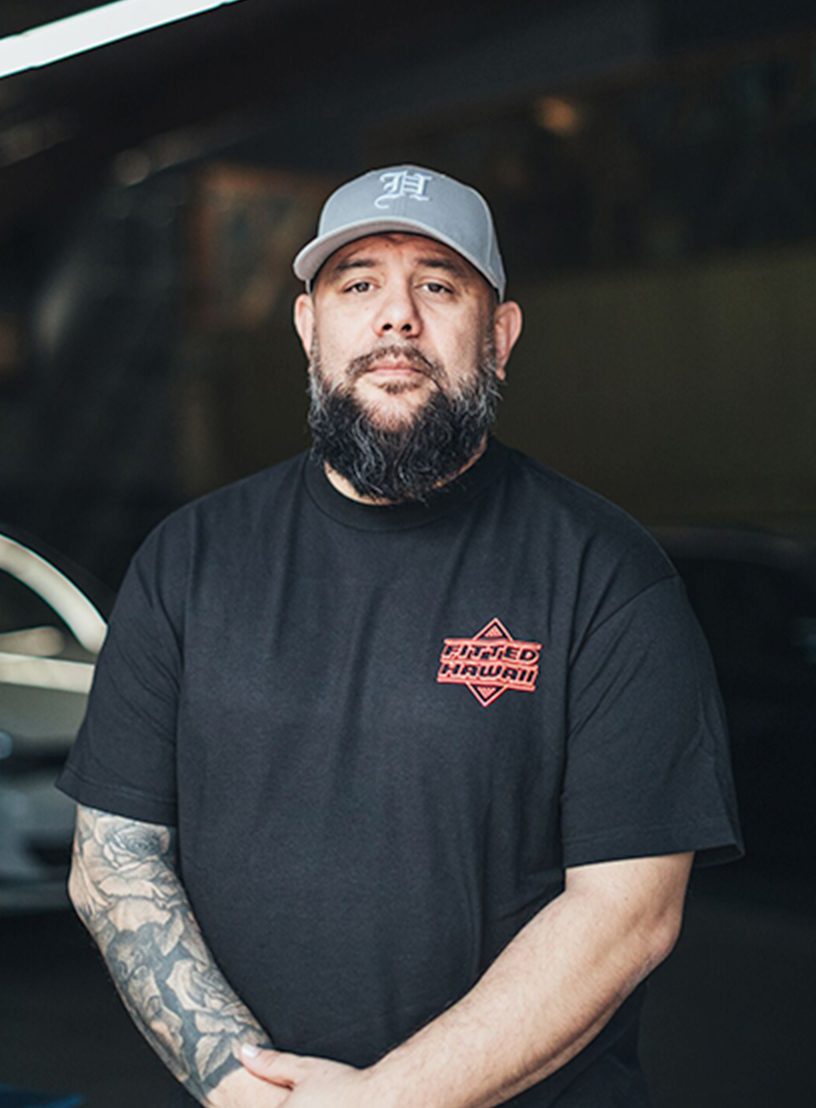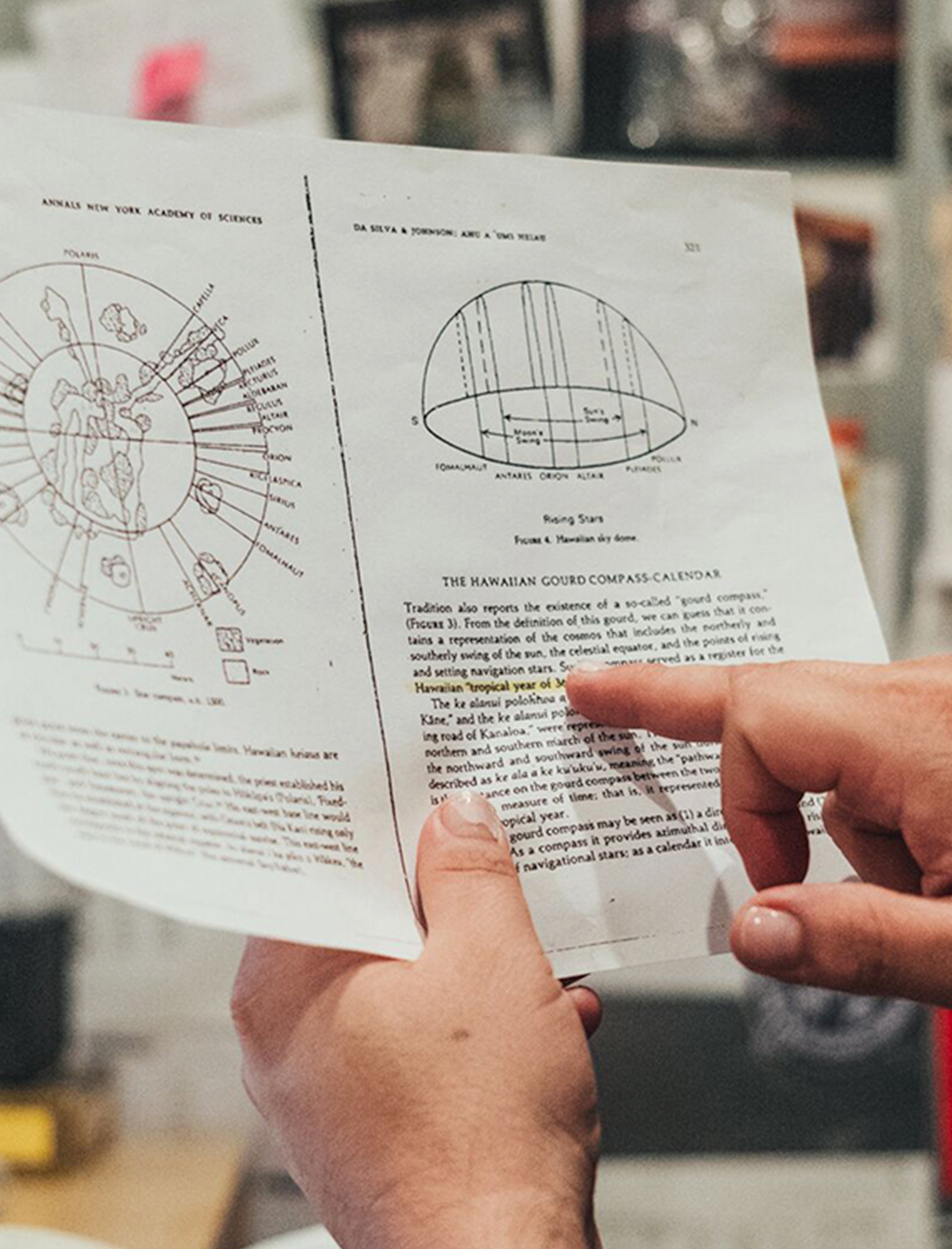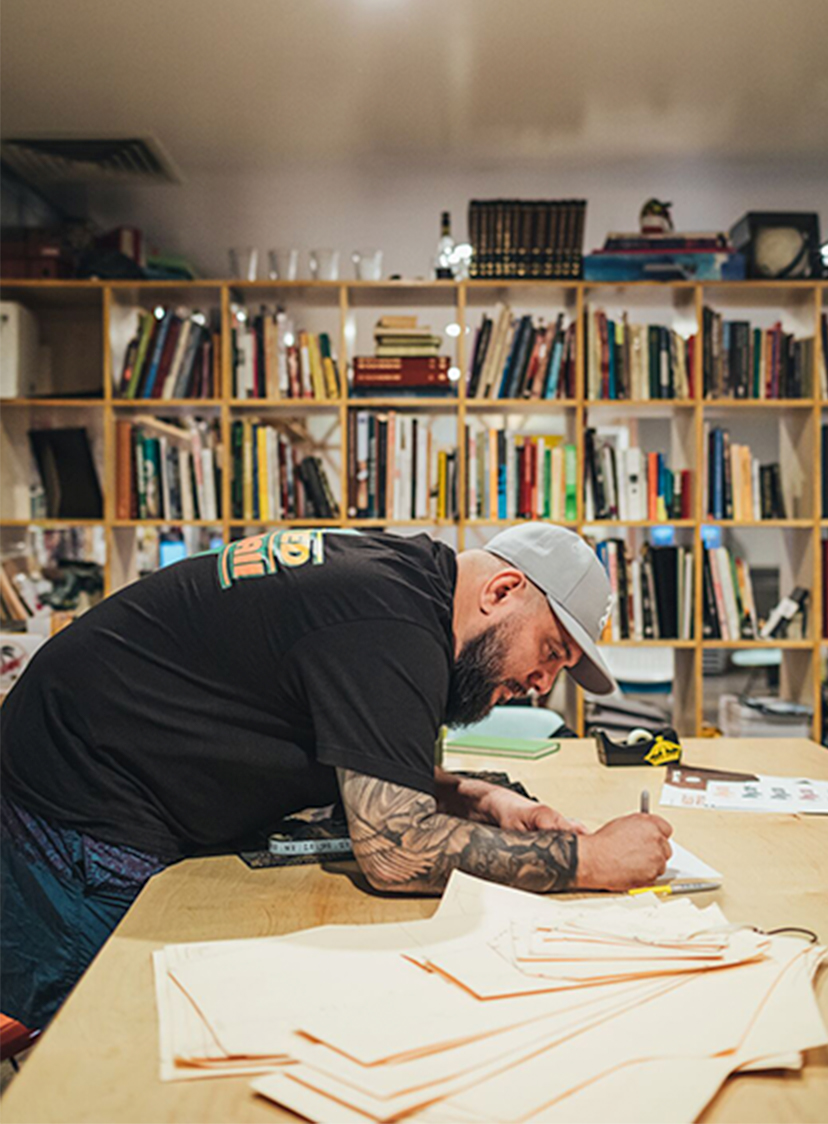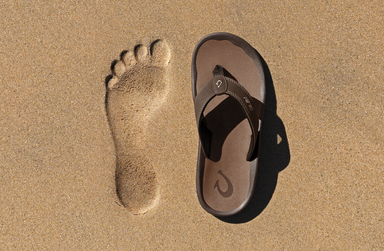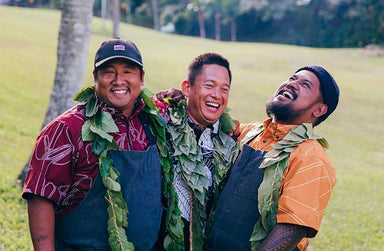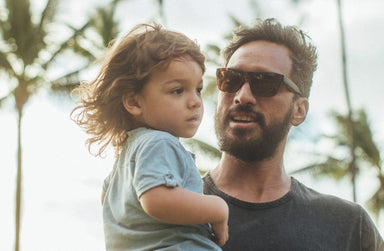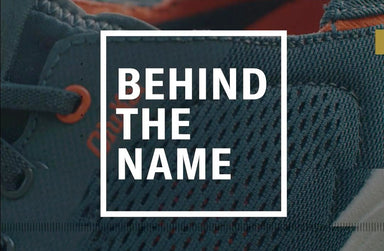Walk Stories
OluKai
Jul 14, 2020
Stories From Our 'Ohana: Meet Keola Rapozo
The New Cultural Aesthetic
In Hawai‘i, being part of a community isn’t necessarily about a limited network in a particular space. Community stretches well beyond one’s immediate ‘ohana, and if you asked Native Hawaiian designer Keola Rapozo—co-founder of the popular, local brand FITTED—he’d tell you that one’s role within their community casts a much wider net.
“Being part of a community means kuleana, or a responsibility,” says Keola. “As a father, husband, friend, son, and brother to my immediate family. But then there’s all the concentric circles radiating outward where I have a keen responsibility to my community, to my neighbors, to people that don’t have access to food, shelter, clothing. So in a word, that role is: kuleana. My kuleana is a responsibility to provide.”
But to zero in on one of those roles, Keola certainly does an outstanding job of both designing and telling authentic, modern stories about Hawai‘i within his designs—something Hawai‘i’s fashion-space certainly needed providing. Indeed, the stories Keola tells within his work and limited FITTED capsules are narratives that truly resonate, both local communities, and beyond. Imagery like golden heirloom bangles, King Kamehameha impressions, kahiko, and regional mom-and-pops eateries that redefine what a “Hawaiian aesthetic” may or may not be.
“Mostly my work doesn’t look Hawaiian or have some Hawaiian aesthetic,” confirms Keola. “I think that if we can create themes in different spaces and different mediums, then the idea of kanaka and being Hawaiian is less about aesthetic and more about the process.”
“But I do believe that the storytelling medium is Hawaiians’ greatest gift. We’ve always been a society of oration,” Keola continues. “We have become natural storytellers in all aspects of communication, in all aspects of art. It’s our greatest artform, so to speak—the way we speak with our hands, the cadence, the pitch, the tone—there’s a very Hawaiian way that we create these visual elements.”
Keola explains that, if anything, storytelling can be used as a tool for connecting communities. But, as he himself is a strong proponent for Hawaiian language, if communities could learn more of the language, the stories could be that much more meaningful. “Perpetuating language in a community, that’s identity and restoration,” he says. “And my responsibility as a father is to make sure that I begin to mend and repair that lost language.”
